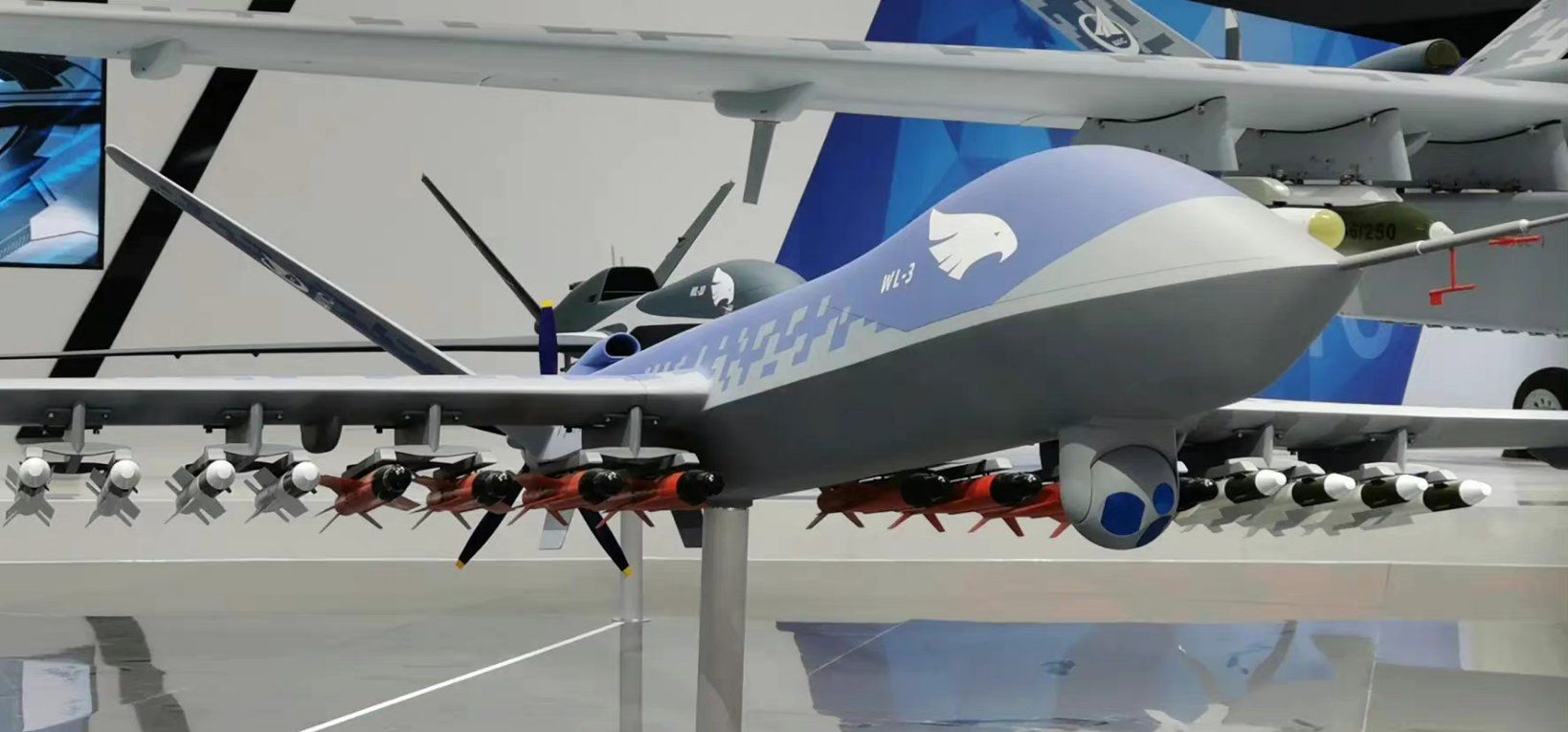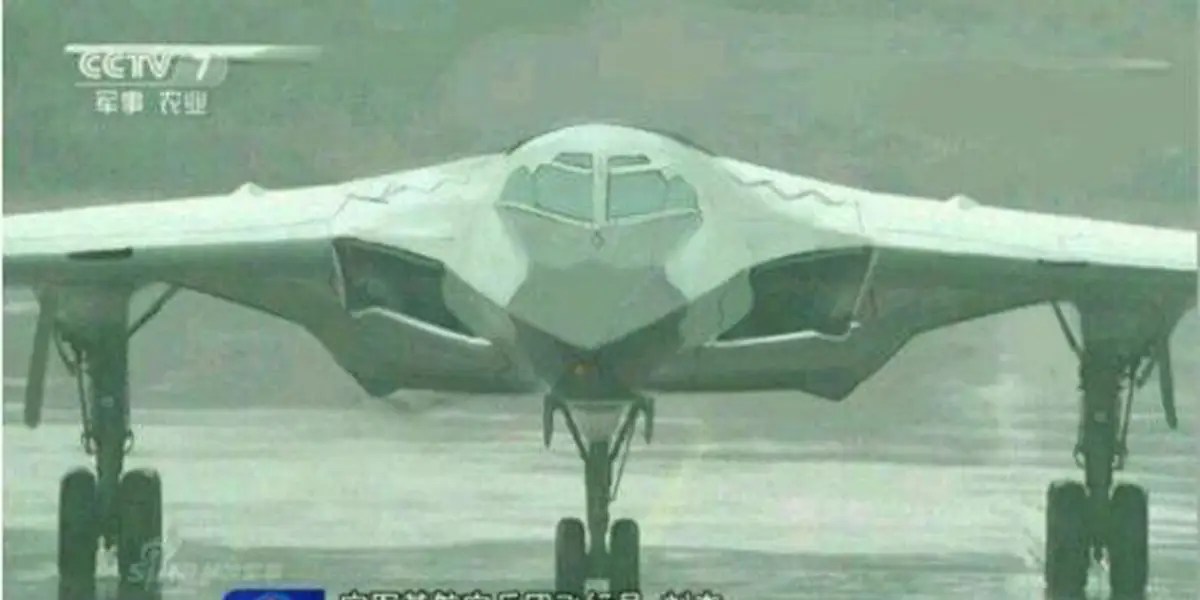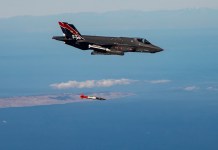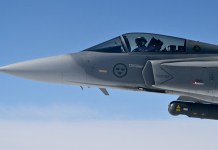The revelation of the Wing Loong-3 concept and the upcoming H-20 bomber marks a change in the Chinese military posture. Having intercontinental ranges, China can now exercise offensive defense, from just defensive offense, especially following the planned deployment of B-52 strategic bombers to Australia.
Interestingly, photos of another sleek stealth manned fighter-bomber concept went around the internet. Commentators said the scale model was displayed at the ongoing Zhuhai Air Show, but some observers dismissed the photographs, saying they first appeared in 2013.
Called the JH-XX, experts said the project and the design were shelved as the H-20 model was finally selected.
Nevertheless, the evolution to having multiple drone designs and missiles still does hand the Chinese military a tool to change its fundamental strategic orientation.
China can now afford to be more proactive and pre-emptive from just reactionary and defensive. The drills around Taiwan in August following US Speaker Nancy Pelosi’s visit allowed China to demonstrate that it can simultaneously carry out a Taiwan operation while deterring interference from other countries.

China’s Defensive Offense
The J-20, J-11, J-16, J-10, and J-15 fighters, along with China’s advanced warships like the Type-055 and Type-52C/D, are offensive platforms. But they would be under a retaliatory realm, where China would respond to a perceived provocation by the United States or Taiwan regarding the latter’s independence efforts.
The same applies to the two other flashpoints, including the South China Sea (SCS) and the Korean Peninsula. Both Pyongyang and Beijing view the United States, South Korea, and Japan’s increasing military dalliance outside their borders as directly threatening their territorial sovereignty.
Even China’s range of ballistic missiles can be used to pre-emptively take out US and Australian naval assets in the first and second island chains.
The DF-16 short-range ballistic missile (SRBM) can reach 1000 kilometers, bringing all the first island chain targets within reach. The 1,500-2,000 kilometers range DF-21D ‘carrier killer’ anti-ship ballistic missile (ASBM) can hit the second island chains and any approaching US naval flotilla.
The DF-26 intermedia-range ballistic missile (IRBM) can reach 3,500 kilometers, hitting the most crucial yet farthest US naval base in the western Pacific – Guam.
The People’s Liberation Army Air Force (PLAAF) is also defensive-oriented, where its offensive platforms lean heavily towards “defense of the Chinese motherland/mainland.”
The J-15 of the People’s Liberation Army Navy (PLAN) and its three carriers, too, are mostly just another line of defense along the coasts after its anti-access/area-denial (A2/AD) weapons.
The H-6K/N series of strategic bombers have a long-range, and recent CG videos show them controlling FH-97 loyal wingmen drones. It would strike incoming enemy ships between the second and third island chains with Anti-Ship Missiles (AShM).
With a range believed to be around 5,954 kilometers (3,700 miles), it can significantly extend the reach of its 289-kilometer range (180 miles) CM-401 ASBM or YJ-12 AShM (range 400 kilometers/250 miles).
Simply said, this has been widely believed to be China’s ‘active defense’ doctrine, where it would “maintain offensive actions at operational and tactical levels while retaining a defensive posture at the strategic level” (Tactically Offensive and Strategically Defensive).

New & Upcoming Drones Jets Allow ‘Active Offense’?
But the stealth H-20, the concept Wing Loong-3 (range 10,000 kilometers), the CH-7′ Soaring Dragon’ (7,000 kilometers), and the supposed fighter-bomber JH-XX complete China’s layered defense of various air, sea, and, missile platforms.
Each has varying ranges, covering all the gaps needed for a robust defense to push back and defeat attacking adversaries – not just fight them to a stalemate.
With all platforms, China can now mount a collective strategic offense to stop the US and its allies’ incursions. Observers are near unanimous in their expectation that China would merely (albeit effectively) keep fighting from the home front, shooting down and sinking whatever targets come its way while simultaneously conducting a Taiwan operation.
It would surround the island as it did in the last drills and begin hitting ground targets (command control centers, air bases, air defense sites) and taking out Taiwanese jets and naval vessels before starting a slow and gradual amphibious landing.
The August 2022 drills saw analysts noting how its Southern and Eastern Theatre Commands succeeded in cutting off the northern part of the SCS from a US Navy carrier battle group (CBG).
But the latest platforms lend a tool to push back and throw out US forces from the region. Whether China chooses to do so is a different matter. This would entail attacking US bases in countries like the Philippines, Japan, or South Korea, which (except Japan) have been largely ambivalent in throwing in their lot entirely with the US. H-20s, when inducted, can also fly to Australia and hit the Tindal Air Force Base, where the US plans to deploy nearly six nuclear-capable B-52 Stratofortress bombers.
But striking them, especially without any attacks on China from US bases there, would be seen as an unnecessary escalation and serve as a diplomatic win for Washington.
Therefore, Zhuhai 2022 and the induction of new weapons serve more as a political statement – that “we can take the fight to you now (if we want to).”
Shelved Fighter Bomber?
Meanwhile, the circulating JH-XX photos are reported to be from 2013, with some defense enthusiasts maintaining that it was one of the designs considered for the H-20.
The JH-XX scale model features canted tail stabilizers, two prominently placed turbofan engines, and a sizable internal weapons bay. However, noted Chinese military aviation expert Andreas Rupprecht doubted its existence in a tweet on January 26 this year.
“Honestly…is there a real JH-XX? I rate this even more mysterious than the Yeti or the Loch Ness monster,” he said.
But it was the US Defense Intelligence Agency (DIA) that first mentioned the project in a 2019 report titled ‘China Military Power – Modernizing a Force to Fight and Win.’
This was after the scale model’s images were published in the May 2018 issue of Aviation Knowledge, China’s oldest and most popular aviation magazine.

While the page is no longer available on the DIA website, observers who had read the report said that the DIA believed it to possess AESA radar, long-range air-to-air missiles, and precision-guided munitions, with a range of 1,600 kilometers to 3,200 kilometers.
It has air intakes on top of the fuselage behind the cockpit, and a ventral primary weapons bay, with separate side-mounted bays for air-to-air missiles.
“This aircraft would allow the PLAAF to conduct offensive and defensive air operations farther from China’s borders, reinforcing A2/AD (anti-access/area denial) capabilities and operating beyond the first island chain that runs south from the Kuril Islands onto Japan and the Philippines.
The aircraft could attack strategic targets in Japan and possibly even on Guam, as well as in India and the South China Sea,” said an article on Military Wiki.
The scale model’s images also appeared in the May 2018 issue of Aviation Knowledge, China’s oldest and most popular aviation magazine. But the point is that even the information surrounding a canceled military aviation project from a decade ago reflects the aspirations of the Chinese military, which are manifesting now.
The culturally strategic Chinese, good students of Sun Tzu as they are, prefer to win without fighting by wielding immense strength and chipping away their adversaries’ will to fight.
Thus, they might want its observers to report on its growing strength, as is happening through this piece. The military ability, now, to be both ‘tactically and strategically offensive’ is statement enough.
- The author can be reached at satamp@gmail.com
- VIEWS PERSONAL
- Follow EurAsian Times on Google News




